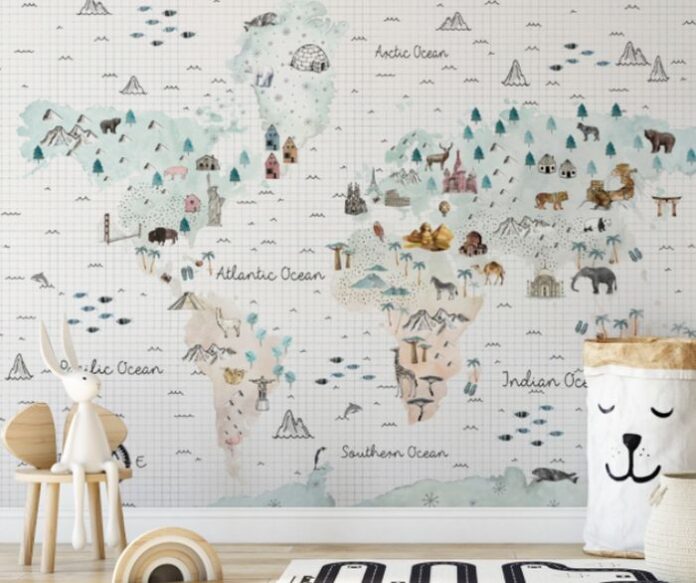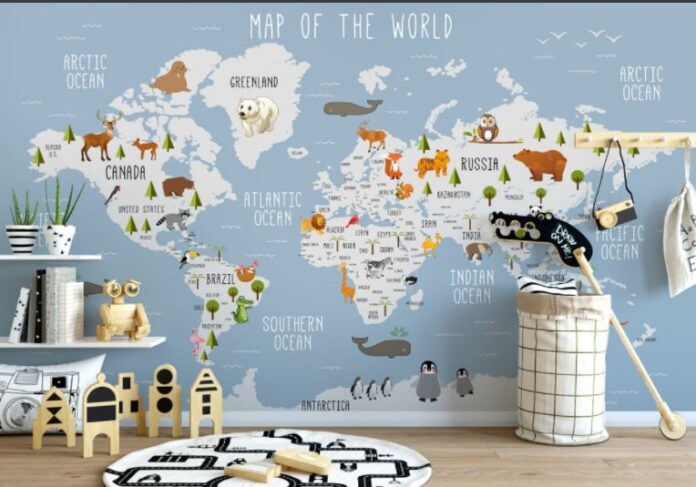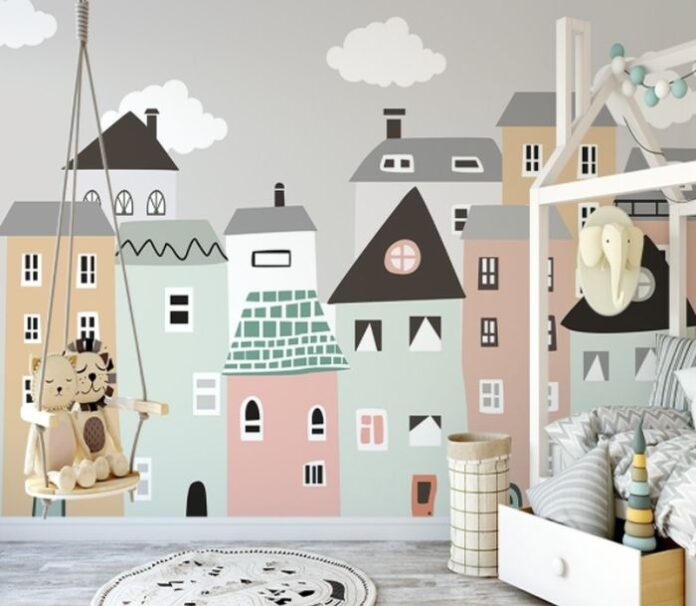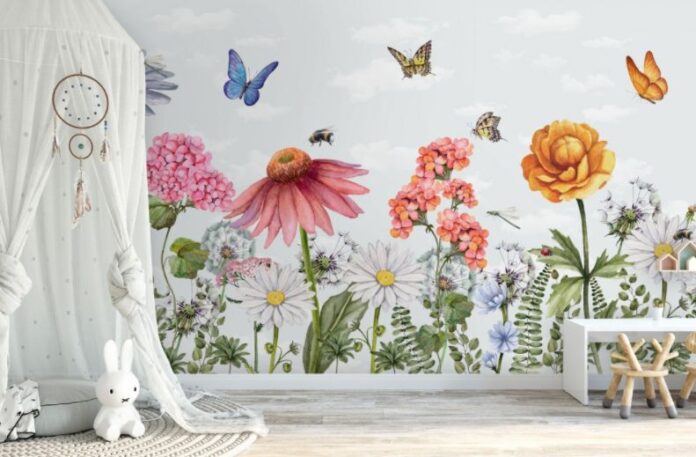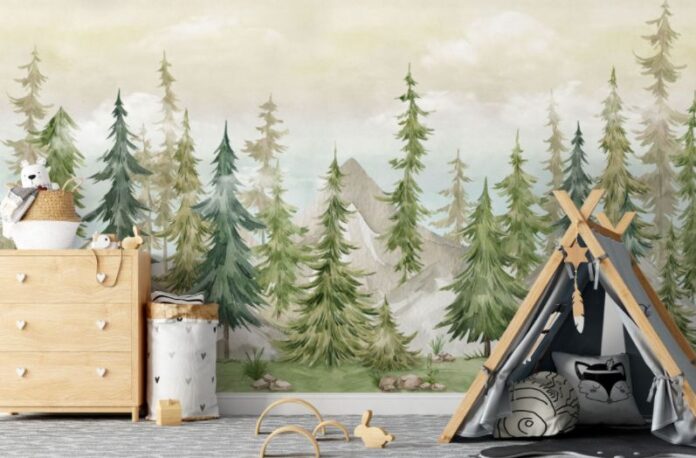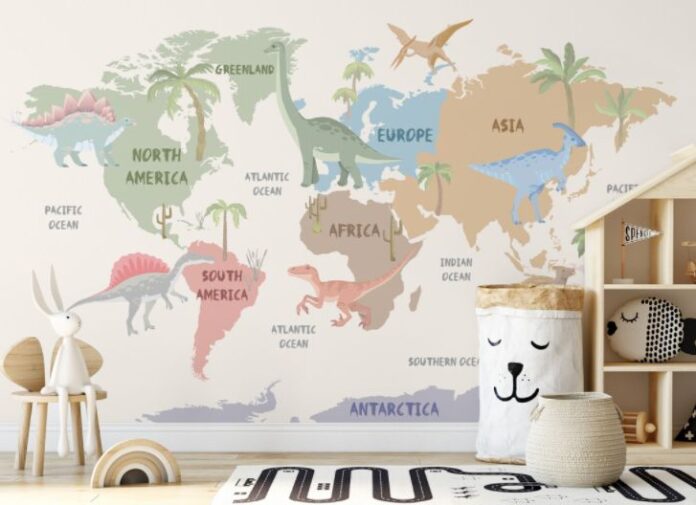It is well known that finishing materials primarily affect the comfort of the premises. However, when there is a child in the house, it is even more essential to create a warm and cozy atmosphere because he learns about the world through everything that surrounds him from an early age. Therefore, the design of the walls in the nursery the choice of baby room wallpapers here are the points that should be approached most responsibly in the designing process.
Texture and composition
Among the variety of wallpaper options for walls, it is better to choose coatings that would withstand the maximum impact of external factors. The nursery is where the child spends most of his free time: the nursery wallpaper, therefore, will quickly become dirty, torn, deteriorate from paints and pencils.
Do not forget that some materials attract dust, and when moisture gets in, they deform and become an environment for the formation of mold and mildew. So what kind of wallpaper is better to glue in the children’s room in order to minimize the negative impact? Let’s figure it out.
Paper wallpapers
One of the most straightforward options for nursery room wallpaper is paper-based wallpaper. The undoubted advantages of such materials include both ease of gluing and low cost. Although paper wallpapers are not very durable and wear-resistant, they are perfect for those who plan to update the design of the baby room wallpaper as the child grows. Additionally, the simplest composition of paper materials does not harm the microclimate of the room and the children’s health.
Non-woven wallpapers
Non-woven materials are in second place according to the choice of consumers to be the wallpaper for the nursery. Even though wallpapers of this type are not entirely environmentally friendly, they do not cause significant damage to health, but they are of higher quality than their paper counterparts.
The positive characteristics of such wallpapers include vapor permeability, the possibility of air circulation, and reinforcing properties. In addition, non-woven wallpapers are elastic, so they rarely lose their original appearance.
Vinyl wallpapers
Vinyl wallpapers are basically a mix between paper and non-woven wallpapers. Depending on the base you choose, you can influence the quality and durability of the finish. The advantages of such wallpapers are related to aesthetic properties. In most cases, they have a more exciting pattern and rich color, and they can also transform a nursery with good decorative effects.
However, from a practical point of view, this choice is not the best one. Vinyl wallpapers impede air exchange and can deteriorate from mechanical damage (for example, by accidental contact with scissors).
Textile wallpaper
Do not forget that the texture of children’s wallpaper is essential for the child: materials that are lovely to the touch and safe for the skin are better to serve as nursery room murals. You can pick between glossy and matte finishes with or without relief, but make sure that children cannot get hurt when they come into contact with such a surface.
One of the best options with a pleasant-to-the-touch texture is a textile-type wallpaper. Thanks to their environmentally friendly properties, stylish and sophisticated fabric wallpapers will also attract you.
But the process of pasting these wallpapers and caring for such materials is more complicated. Moreover, in the nursery, there are many more reasons to worry about the condition of the wallpapers. Therefore, think in advance whether you are ready to sacrifice significant amounts to create a stylish wall design in the nursery. There is an excellent possibility that your modern wallpapers will not look so chic after a couple of months.
Other materials
It is not recommended to glue other types of wallpaper in the nursery, although they are sometimes used to decorate areas that are not accessible to small children. For example, the functional properties of liquid wallpaper are inferior to standard types of wallpaper for walls. And practical and durable cullets can crumble both during and after gluing and cause allergic reactions.
How to decorate a nursery
Step 1. Choosing the room and planning the renovation
If you have the opportunity to choose a room, then preference should be given to the one that is closer to the parent’s bedroom, well ventilated, and illuminated. All repair and finishing work must be completed long before the baby arrives so that you have a margin of time for possible improvements and alterations.
As for the choice of finishing materials, they should be predominantly natural. Here are a few tips that can aid you with this:
• The best floor materials: cork, natural linoleum, varnished floor, or parquet board. Less suitable: laminate (since it is cold, slippery, and collects dust), PVC linoleum (although its harm has not been proven), and carpet (collects dust, though it depends a lot on the type of the carpet.)
• For wall decoration, water-based paints are best, with corresponding labels proving that they are safe for the children. Nursery wallpaper should have neutral tones and a discreet pattern.
Step 2. Developing an interior color scheme
Pastel shades for walls, curtains, and furniture are encouraged in the interior of a children’s room for a baby. That is necessary, so your child can easily fall asleep without being distracted by anything. Bright colors in the children’s bedroom are also needed, but they should be present only pointwise, such as rattles. By the way, the first colors that your baby will meet will be red and yellow. And up to 1.5-2 months, he will see the world only in black and white light.
What pastel shades can you choose?
• If you do not yet know the gender of the child or want to design a room gender-neutral, then the following tones will do: white, creamy, pale yellow, beige, light green.
• The interior of a newborn girl’s room (except for the above) can be decorated with pink, lilac, cream, coral shades. The interior of the boy’s room is blue, light gray, light green.
In addition to personal preferences, be sure to consider the orientation of the room to the cardinal points:
• For dark “northern” children’s rooms, it is better to choose warm shades.
• You can choose any color for a room facing south, but cold shades will be especially successful.
